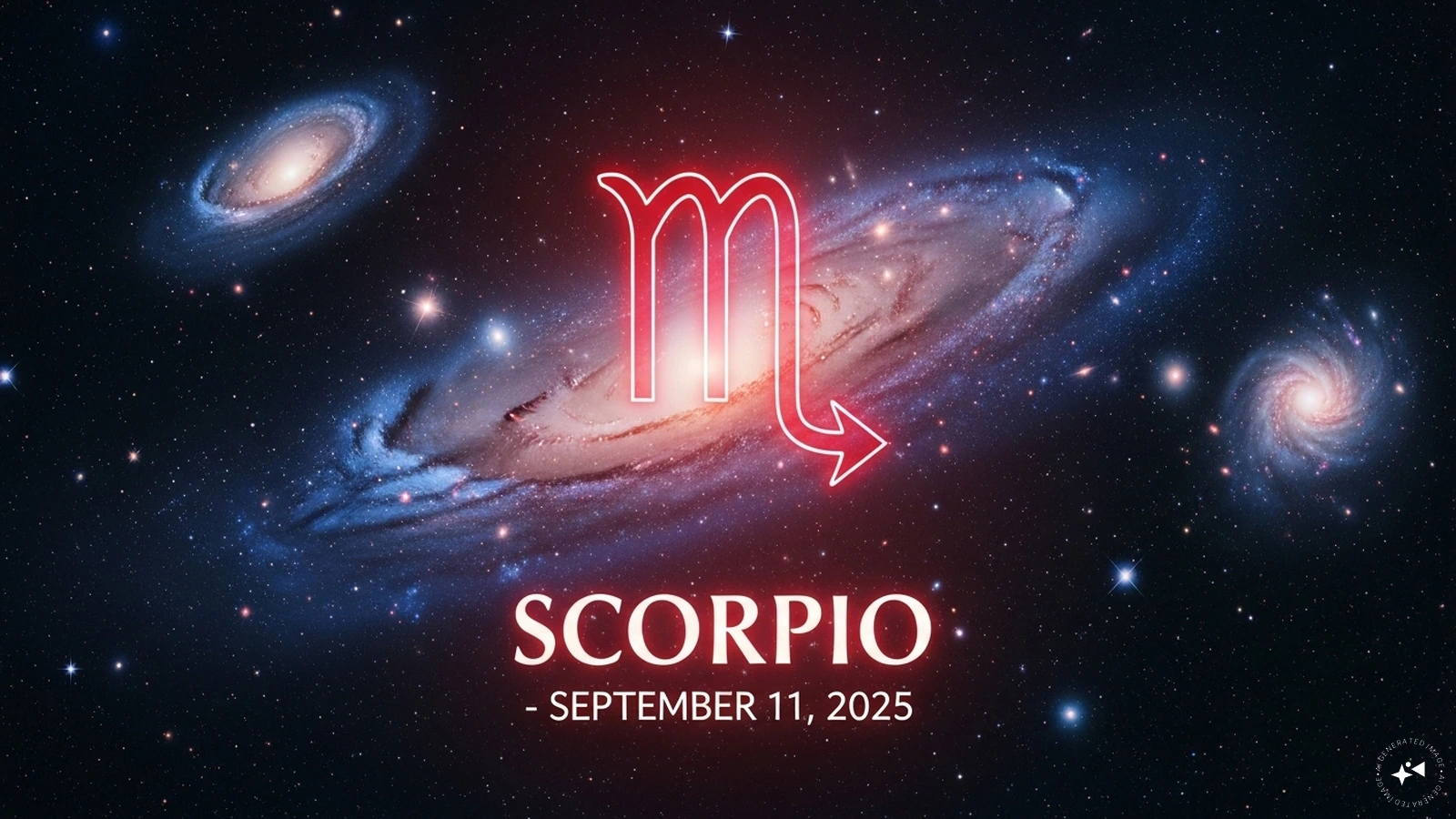‘When people gather in groups, bizarre behaviors often emerge’: How the rise of online social networks has catapulted dysfunctional thinking
By Carlo Kopp,David Green,Fatima Seeme
Copyright livescience

Skip to main content
Close main menu
Live Science
Sign up to our newsletter
View Profile
Search Live Science
Planet Earth
Archaeology
Physics & Math
Human Behavior
Science news
Life’s Little Mysteries
Science quizzes
Newsletters
Story archive
Skyscraper-sized asteroid flyby
1,900-year-old Roman-treasure found
Grumpy Pallas’s cat photographed
Anthropologist Ella Al-Shamahi on human origins
COVID vaccine poll
Don’t miss these
Human Behavior
Scientific objectivity is a myth — here’s why
Human Behavior
Only 64% of Americans accept the idea of evolution — here’s one reason why
Climate change
Action on climate change faces new threat: The doomers who think it’s too late to act
Artificial Intelligence
AI slop is on the rise — what does it mean for how we use the internet?
Viruses, Infections & Disease
‘We have basically destroyed what capacity we had to respond to a pandemic,’ says leading epidemiologist Michael Osterholm
Human Behavior
People who see society as cutthroat value antagonistic leaders, study finds
Communications
Your data is being compromised much quicker than ever before, but you don’t have to sit still and take it
Artificial Intelligence
There are 32 different ways AI can go rogue, scientists say — from hallucinating answers to a complete misalignment with humanity
Artificial Intelligence
AI chatbots oversimplify scientific studies and gloss over critical details — the newest models are especially guilty
In disasters like the Texas floods, warning people of danger isn’t so simple
Artificial Intelligence
AI hallucinates more frequently the more advanced it gets. Is there any way of stopping it?
Medicine & Drugs
Unpacking RFK Jr.’s (many) false claims about COVID vaccines
Artificial Intelligence
The more advanced AI models get, the better they are at deceiving us — they even know when they’re being tested
Artificial Intelligence
AI models can send subliminal messages that teach other AIs to be ‘evil,’ study claims
Science news this week: A key Atlantic current nears collapse, the world’s biggest iceberg shatters, and mouse brains rewrite neuroscience
Human Behavior
‘When people gather in groups, bizarre behaviors often emerge’: How the rise of online social networks has catapulted dysfunctional thinking
Fatima Seeme, David Green, Carlo Kopp
17 September 2025
The pervasive spread of misinformation can be tracked to cognitive limitations, social influence and the global spread of online networks. Combatting it has become an “arms race” between truth and lies.
When you purchase through links on our site, we may earn an affiliate commission. Here’s how it works.
During the COVID-19 pandemic, people started attacking 4G and 5G over the false belief radio-frequency emissions was causing the disease.
(Image credit: Busà Photography/Getty Images)
When the COVID-19 pandemic broke out, a bizarre conspiracy theory swept through global social media: that the disease was caused by radio-frequency emissions from 5G cell phone towers. The wild theories spread across social media platforms. The belief in this conspiracy was so fervent that the media reported more than 100 incidents of arson and vandalism against 5G (and 4G) infrastructure, as well as numerous instances of abusive or threatening behavior against telecommunications workers.
Why do bizarre events like this happen? In our recent review article, published May 19 in the journal Frontiers in Communication, we showed that conspiracy theories and other widespread incorrect beliefs emerge from complex interactions involving people’s cognitive limitations, social influence in groups, and the global-scale spread of ideas across social networks.
This fatal combination of processes at different scales — individual, group and global — has led to the online problems we are seeing today. Their complexity makes the resulting social trends incredibly difficult to combat.
You may like
Scientific objectivity is a myth — here’s why
Only 64% of Americans accept the idea of evolution — here’s one reason why
Action on climate change faces new threat: The doomers who think it’s too late to act
Primed for poor thinking and bizarre group behaviors
The root cause of poor thinking lies in our evolution. Our ability to cope with complex information is limited, so our brains take shortcuts, such as confirmation bias — the tendency to notice things that match our preexisting beliefs and ignore those that don’t. For example, we quickly forget waiting in a fast queue but remember how annoying a slow queue is, and ask, “Why am I always in the slow queue?”
Another symptom of our inability to cope with complexity is the tendency to see malicious intent in complex, unexplained events. This tendency has planted the seeds for much injustice, from witch hunts to conspiracy theories. The reality is that unexpected events and behaviors often emerge through networks of interactions, without any conscious prompting.
When people gather in groups, bizarre behaviors often emerge. Like epidemics, false beliefs can spread from person to person. Were you ever afraid to ask a question in class? You think everyone else understands, and you don’t want to look stupid, but sometimes, no one understands. Known as pluralistic ignorance, this problem underlies many social problems. For instance, people who are usually helpful often become passive bystanders in the presence of others and fail to help a victim.
Related: Why do people believe in conspiracy theories?
Sign up for the Live Science daily newsletter now
Get the world’s most fascinating discoveries delivered straight to your inbox.
Contact me with news and offers from other Future brandsReceive email from us on behalf of our trusted partners or sponsorsBy submitting your information you agree to the Terms & Conditions and Privacy Policy and are aged 16 or over.
A similar problem is groupthink: Everyone stops voicing their own opinion because they want to protect the reputation of their group, even if they disagree, and blindly follow the leader. Groupthink was implicated in many famous calamities, including the loss of the Space Shuttle Challenger.
Another problem with potentially disastrous consequences is polarization, where a group splits into two camps with mutually opposed, irreconcilable viewpoints that become increasingly separated over time.
Pluralistic ignorance, groupthink and polarization are all known to be “emergent” effects that arise naturally under suitable conditions. This self-organizing behavior of groups is often not understood, and frequently attributed to other causes. It is also why governments, media and public are often caught by surprise when groups suddenly emerge promoting strange agendas.
You may like
Scientific objectivity is a myth — here’s why
Only 64% of Americans accept the idea of evolution — here’s one reason why
Action on climate change faces new threat: The doomers who think it’s too late to act
The above group behaviors emerge spontaneously when individual failures in cognition interact and lead to dysfunctional group behaviours. They are driven by a deep social drive for safety in a group. This fuels errors in the way we think and leads people to take the “safe” route and follow the crowd.
Rapid spread of extremist views
The problem today is that what in the past would have been the whisper of a few voices now has the potential to ignite widespread mayhem. Imagine living in a traditional village, hundreds of years ago. It’s a small world. Ideas spread by word of mouth from person to person. They move outward very slowly, when visitors move from village to village. Even today, we still inhabit many kinds of “villages” — family, neighbors, colleagues, friends — and ideas spread as we move between groups.
The advent of mass media has given some people a far wider reach than ever before. It has aided propaganda while also amplifying extreme views. On the internet, groups of people are connected, irrespective of geographical distance, so individual views can be reinforced by large supporting groups.
Communities of like-minded people emerge via social media. This includes the rapid spread of extremist views and conspiracy theories. Connecting individuals with extreme views via social media allows very large groups to share malign views. Bizarre behaviors, like the 5G sabotage mentioned above, can surface, often very quickly.
The truth can’t compete with lies
Why do deceptive messages spread well? They can be designed to seduce audiences by exploiting known cognitive biases. This technique is widely used in politically polarized media, social media and biased fact-checking. It exploits confirmation bias and motivated cognition. Truthful messages simply cannot compete with customized fakes.
Related stories
—RFK Jr. wants to overhaul the country’s ‘vaccine court.’ Here’s what stands in his way.
—Most methods for squashing conspiracy theories don’t work, study finds. Here’s what does.
—Should people get their health information from YouTube? Retired surgeon and content creator Liz O’Riordan on ‘breaking through the nonsense’
Another well-known cause is the spreading behavior of social networks, especially when connected by very fast and pervasive digital networks. Studies have found that deceptive messages usually spread in a manner that resembles the models used by epidemiologists in medicine. Social media “influencers” often become “super-spreaders” of false and misleading content.
The above behavior suggests that authorities might suppress the spread of deceptive messages by treating them like epidemics. These are typically defeated by taking three steps: Suppress the source, limit the spread, and increase the immunity of the exposed population. If the pathogen is digital, this suggests blocking or de-platforming creators and spreaders of malign messages, filtering malign content on media platforms, and educating or training audiences to reject malign content.
This is easier said than done.
Creators and spreaders will leverage freedom of speech legislation, and/or migrate between platforms and media types. Meanwhile, audiences may persist in believing malign nonsense and are prone over time to forget what they are taught. Unfortunately, there is an immense diversity of ways to spread malicious messages.
The world is now confronted with the prospect of a perpetual “arms race” in tactics and technology between purveyors of propaganda and nonsense, and people trying to tell the truth, with audiences that frequently do not know enough to care about the differences between fiction and fact.
Communities that choose not to play in this “arms race” will be inundated with falsehoods and suffer increasing social discord as consensus on any issue of community concern will be disrupted to the point of paralysis. Communities that choose to confront malign actors will have to invest time and resources to play in the “arms race” and attempt to prevent or manage unwanted damage effects.
There is no simple panacea solution: expecting to find one is wishful thinking.
Opinion on Live Science gives you insight on the most important issues in science that affect you and the world around you today, written by experts and leading scientists in their field.
Carlo Kopp is an academic in the Cybersecurity Group, Faculty of Information Technology, at Monash University in Melbourne, Australia. He received his PhD and MSc degrees in computer science from Monash University. His prior experience spans computer industry appointments as a hardware designer and code developer, appointments in military analysis and strategic studies think tanks, and academic research spanning multiple areas, with well over 500 publications. He is best known as one of the first generation of Information Warfare researchers, for his work on infrastructure vulnerability to electromagnetic threats, and the co-discovery of the Borden-Kopp information-theoretic model of deception.
You must confirm your public display name before commenting
Please logout and then login again, you will then be prompted to enter your display name.
Scientific objectivity is a myth — here’s why
Only 64% of Americans accept the idea of evolution — here’s one reason why
Action on climate change faces new threat: The doomers who think it’s too late to act
AI slop is on the rise — what does it mean for how we use the internet?
‘We have basically destroyed what capacity we had to respond to a pandemic,’ says leading epidemiologist Michael Osterholm
People who see society as cutthroat value antagonistic leaders, study finds
Latest in Human Behavior
Live Science crossword puzzle #10: Tallest volcano on Earth — 10 down
Live Science crossword puzzle #9: A ‘royal’ snake that wears a hood — 14 across
Scientific objectivity is a myth — here’s why
Live Science crossword puzzle #8: Lowest possible temperature in the universe — 3 down
Live Science crossword puzzle #7: NASA mission that redirected an asteroid — 8 across
Live Science crossword puzzle #6: Planet with a ‘Great Red Spot’ — 6 down
Latest in Opinion
‘When people gather in groups, bizarre behaviors often emerge’: How the rise of online social networks has catapulted dysfunctional thinking
‘Your fear is well-founded’: How human activities have raised the risk of tick-borne diseases like Lyme
How the surface you exercise on might increase your risk of cramps
‘Serious adverse and unintended consequences’: Polar geoengineering isn’t the answer to climate change
TRAPPIST-1e might have an atmosphere, JWST hints
RFK Jr. wants to overhaul the country’s ‘vaccine court.’ Here’s what stands in his way.
LATEST ARTICLES
Science history: A tragic gene therapy death that stalled the field for a decade — Sept. 17, 1999
‘We certainly weren’t exceptional, but now we’re the only ones left’: In new PBS series ‘Human,’ anthropologist Ella Al-Shamahi explores how humans came to dominate Earth
1,900-year-old ‘treasure’ found in Roman-era family’s scorched house in Romania
Skyscraper-size asteroid previously predicted to hit us in 60 years will zoom past Earth on Thursday (Sept. 18) — and you can see it live
Grumpy-looking Pallas’s cat photographed by camera trap in stunning photo from eastern Himalayas
Live Science is part of Future US Inc, an international media group and leading digital publisher. Visit our corporate site.
Contact Future’s experts
Terms and conditions
Privacy policy
Cookies policy
Accessibility Statement
Advertise with us
Web notifications
Editorial standards
How to pitch a story to us
Future US, Inc. Full 7th Floor, 130 West 42nd Street,
Please login or signup to comment
Please wait…



